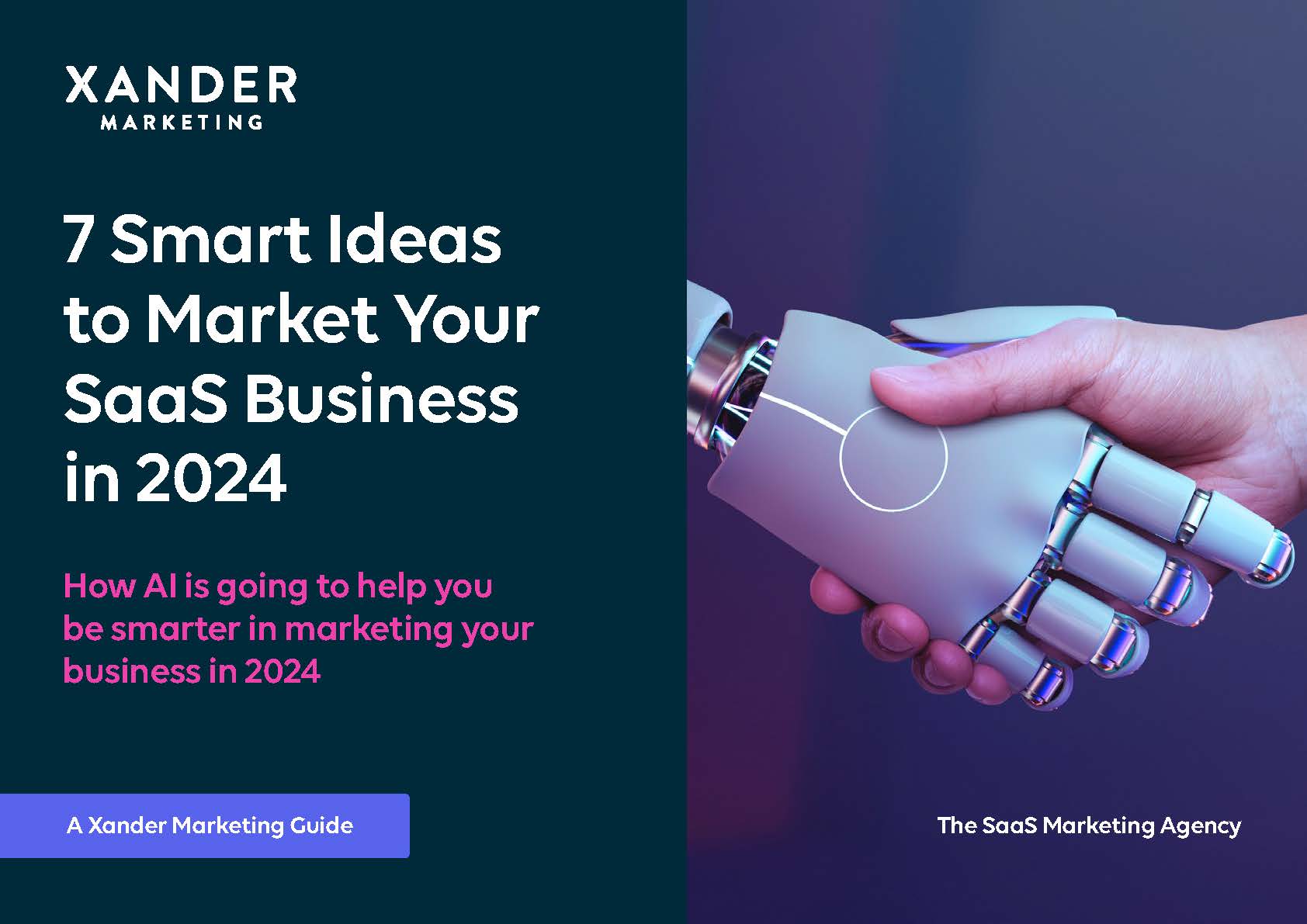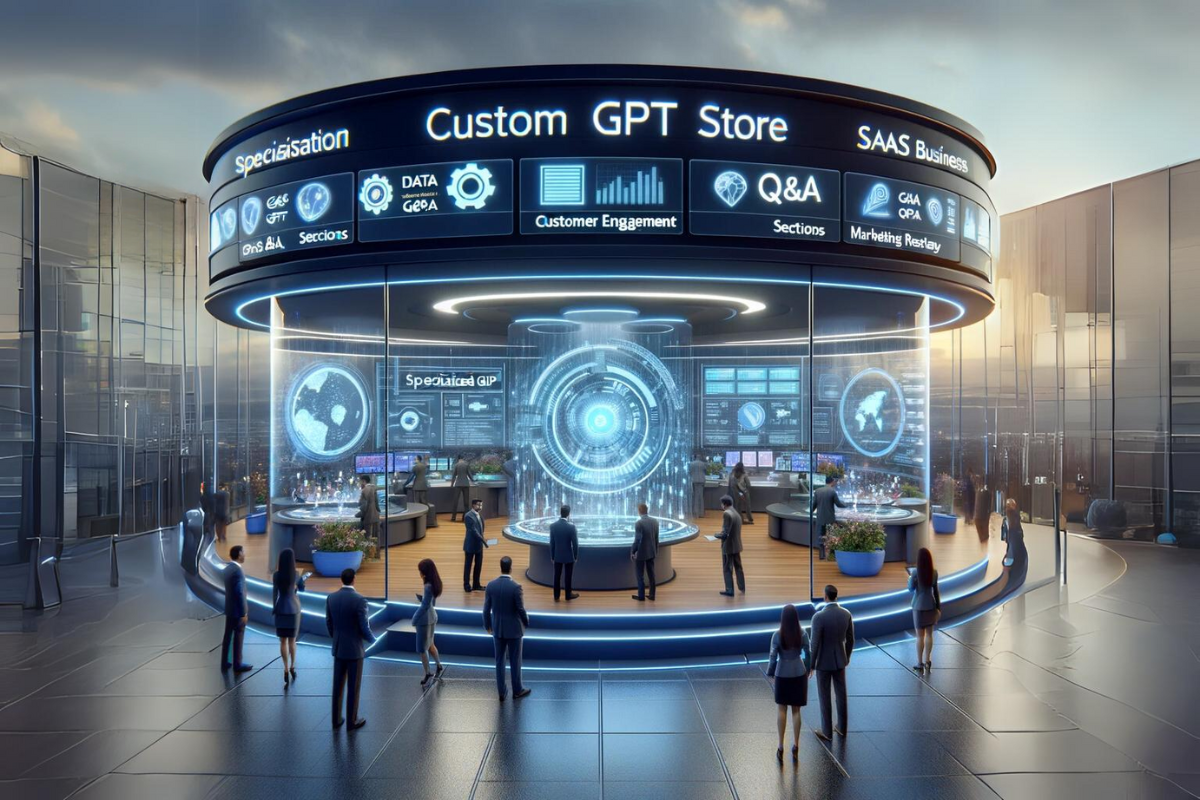Artificial Intelligence (AI) is the tech topic of the moment, and the buzz has been increasing in intensity ever since ChatGPT launched its public platform towards the end of 2022.
Artificial Intelligence (AI) is the tech topic of the moment, and the buzz has been increasing in intensity ever since ChatGPT launched its public platform towards the end of 2022.

To those in the know, after decades of research and development work, it was wholly inevitable that one day AI would emerge from the shadows to be recognised as perhaps the ultimate achievement of the information age.
Technology is a change driver. It’s not 40 years since the Windows PC started to appear on desktops across the world. Only around 3 decades have passed since the internet opened up to widespread commercial operation. It’s just over 20 years since the first ASP SaaS-style services launched. But the buzz and expectations about AI overshadow any of those. And rightly so!
Whatever your perspective, it seems likely that we have passed an inflexion point, where the rate of change is only going to increase sharply. Quite simply, it is impossible to speculate or make any sort of educated and realistic prediction about technology and marketing, or practically anything else for that matter, without considering the influence AI is likely to exert.
If 2022 was a year of businesses across the globe acclimatising and getting to grips with the changes resulting from Covid, then for many, 2023 was about adapting to the difficult trading conditions brought about by acute inflationary economic pressure. 2024 is going to be defined by the challenges of AI. These don’t just last for a period and then dissipate over time as we move on. Because, quite simply, AI changes everything.
If recent decades have taught us anything about the tech sector, it is that ground-breaking technology is highly disruptive and produces winners and losers. You need to be on the right side of the equation. The wholesale adoption of AI looms large and demands your attention because you simply cannot afford to ignore it.
The proliferation of SaaS has enabled a new model of SaaS-powered workplaces to assume a market-dominating position. Through 2020-23, this worked in tandem with the need to adapt to Covid lockdowns and distancing. This created the conditions for the widespread acceptance of a much more fluid approach to the workforce.
This is not limited to where and when work is done; it also allows companies to embrace the ‘gig’ economy approach to meet fluctuating demand, by bringing resources onstream quickly and connecting teams seamlessly to deliver services.
SaaS not only provides the productivity tools, but it is also the backbone that provides workforce flexibility, enabling workers across businesses to work together as organisational teams. The technology has now assumed a position of unassailable importance, and AI has now been hurled into the mix.
According to Statista, in 2023, the global public cloud application services (SaaS) market achieved an estimated worth of approximately 197 billion U.S. dollars. For 2024, it is expected to reach 232 billion U.S. dollars. Such headline stats support confidence in the sector and, even in times when companies need to reduce costs as much as possible, ultimately reflect the strength of the cost-benefit evaluation of SaaS technologies.
However, despite business demand for SaaS applications and platforms remaining very robust, keeping a close eye on churn rates and contraction MRR (resulting from account downgrades) is imperative for SaaS business CFOs. The market is also healthily competitive; for every company that leads a segment, more often than not, there are several snapping at its heels.
Despite the positive signs, publicly listed SaaS companies are fully exposed to market forces and the chaotic influence of the wider economy. With stock values falling and investors getting jittery, headcount reduction has proceeded through 2023 and is likely to continue through 2024.
Such characteristics place an emphasis on the need for marketing. (Well, we would say that, wouldn’t we? But nevertheless, it’s true!) A strategically-led marketing effort is a prerequisite for any company that wants to compete effectively to retain its existing market share and drive growth.
Marketing cornerstones that no SaaS business can afford to overlook include messaging, branding and a website; great design, sharp writing, email marketing and PPC/SEO. But if only that were the whole story! The marketing mix mushrooms out, with elements such as content marketing, social media, PR, and partnerships, as just a handful of other key areas to consider.
Marketing can be as complex or as simple as you wish to make it. The trick is to make sure what you do is effective. Deciding what you spend, and who you spend it with, is just as important as the channels or activities you spend it on.
The need is for a smart, savvy strategy that delivers outstanding cornerstone elements and generates imaginative, creative tactical marketing activity to drive engagement and conversions. In an economic climate where even the most prosperous and successful tech businesses have to be cost-conscious, it’s certainty that everyone else is too. But there is a trap waiting…
In the effort to minimise costs, there is a need to strike a balance. If leads are to be effectively generated, nurtured and converted, budgets need to be realistic. It is essential to avoid the pitfall of spending the bare minimum on half-hearted, underpowered marketing, because it is a little like throwing your money into a fountain and making a wish!
As the sector moves forward through 2024, SaaS business leaders sure have a lot to think about. In the midst of it all, for many, one thought is likely to dominate: How is AI going to change things?
With over 14 years of SaaS Marketing experience and as the first marketing agency specialising solely in the SaaS sector, Xander Marketing is attuned to the issues facing SaaS businesses this year.
We want to help SaaS ventures market their businesses as effectively as possible in these changing times, so we’ve pulled together our expertise to bring you 7 Smart Ideas to Market your SaaS Business in 2024.

ChatGPT led the charge of the latest AI when it launched as a public platform in November 2022. AI has been making tech (and non-tech) headlines globally ever since. And it is not going to go away, ever.
SaaS tools that incorporate AI in the form of machine learning (ML) have been available to businesses for some time now. However, more advanced AI-enhanced SaaS products have now moved from being an enterprise-level only option into the mainstream, available to businesses of any size.
While the efforts to produce specific AI-based machines like self-driving cars and robot waiters for food service have provided nice, consumer-friendly headlines for several years, the development of generative AI has been happening quietly under the radar.

There are several general inferences we can draw about what the immediate future holds for AI, marketers, and marketing tech:
AI platforms that are rapidly transforming core activities that marketers perform include:
Remember, today, we see AI in what will, one day, be regarded as a ‘primitive’ form. It’s only going to get better!
Unique software concepts or functionality only last so long. Your competitors will inevitably update their SaaS products to catch up, ‘stealing’ your killer feature. Inevitably, you’ll end up in a marketplace cluster where it’s hard to stand out.
2023’s MarTech Map gives an idea of just how many companies are competing in just one SaaS segment. Scrolling through the logos really brings home how easy it is to get lost in a sea of similar companies. So, how do you stand out from the crowd?
Enter branding. Consumer businesses have been leveraging brand power for over 100 years, and today’s most successful SaaS companies are still creating standout strategies. By adopting a creative approach, they develop their brands by being aspirational, exciting and emotionally effective. This creates a unique quality that differentiates and makes them memorable.
Branding can be made up of names, logos, colours, fonts, personas and reputations, all of which combine to portray your company. Each of these elements reflects something about your company. The way that you use imagery and words conveys attitudes, beliefs and values. Ultimately, together all of these factors express the personality of the brand.
When consumers start to associate your values – and the value you can offer them – with consistent branding across your platforms, they will have an immediate emotional response to your marketing that outweighs competitors’ efforts.
Taking this to the next level is the idea of the ‘branding moat’, which provides a competitive advantage, protecting your company’s long-term interests and market share. Moats could take the form of:
A good example of how a strong brand has proved triumphant is Slack. In late 2013, the service launched to little acclaim as one of many team messaging platforms offering more or less the same features. However, in 2023 it is a ubiquitous name in workplaces across the globe.
Slack grabbed attention by positioning its product as a whole new way to work. With the simple tagline “Be less busy” and the promise of “an infinite brain for your whole team”, it moved away from promoting its software as a commodity, and toward making it a lifestyle.
Its marketing copy and tone tell its own story, bringing small bursts of playfulness into the working day. From the loading screen to error messages, Slack creates a distinct persona that sets it apart from other messaging apps and evokes an emotional response.
The product’s core values shine front and centre, with a feature-rich free plan and a fair billing policy. This taps into the key customer need for cost-effectiveness and builds great brand value.
Another strategic aspect of branding that can help marketing to leap forward is acquiring people, assets, or companies with established reputations, significant web traffic or complementary functionality. Acquiring suitable thought leaders means they bring their audience with them; adding assets, such as a newsletter or podcast with hundreds of thousands of subscribers who can be leveraged; acquiring tech companies whose products complement your own and support your vision can pitch your business up into the next growth tier in a single masterstroke. HubSpot acquiring The Hustle is a good example of this.
Good branding elevates your company to stand out from the crowd of similar products. Once you’ve got a stellar brand in place, it doesn’t matter if your competitors copy your killer feature. Your customers are already sold on what you stand for, and where you can take them.
Ready to stand out from the crowd? Check out our guide to creating a strong brand strategy here.

Product-led growth (PLG) or the ‘freemium’ model conversion tactic has been popular for a number of years now, and for good reason… it works! Many potential customers find that the alternative approach of demos and free trials does not really fit in with the day-to-day demands of work. How many times have you signed up for a SaaS product, tried it once, and then never logged in again?
It’s difficult for prospective customers to find the time to thoroughly evaluate a product to see whether it’s right for their business. To avoid this barrier, many SaaS companies find that freemium services are much more pragmatic and evaluation-friendly.
Offering some of your product’s core benefits for free with no time limitations provides initial value at zero cost, while allowing users to get a feel for functionality and your brand at their own pace.
This allows users to move through the sales funnel naturally, evaluating your product on the go, based on their particular needs. When your product is a great fit for a user, they will start to use it habitually on a weekly or daily basis. This has proven to be an effective conversion tactic, most successfully with mobile apps.
Tools for subscription management, usage tracking, in-app messaging and email marketing let you guide your free subscribers toward premium functionality, encouraging users to take their experience to the next level. As they’re likely already hooked on the core features, it’s a compelling approach for an easy sale, converting a free user into a paid subscriber.
HubSpot has been a key proponent of this product-led growth (PLG) model in recent years, building a user base of freemium customers and focusing its marketing efforts on upselling and converting them into paying customers.
The brand’s free tools include a CRM, marketing, sales, service, operations and CMS solutions, designed to give a taste of the full product’s breadth of functionality. Paid plans allow for additional users, as well as offering automation, payments and playbooks, making the transition from trial to adoption easy.
PLG lets your product sell itself, demonstrating its ease of use and streamlined user experience and lets free subscribers make informed decisions about conversion to paid subscriptions.
For 2024, AI is likely to enable SaaS businesses to improve the results of freemium product-led growth strategies. Through analytics and automation, AI identifies high-value freemium users and recommends paid features to those who are most likely to convert to paid customers, using in-app messaging and email campaigns. Predictive analysis also helps to automate interventions that prevent churn, personalise onboarding and optimise the pricing structure where the audience may be price sensitive. Onboarding has evolved from a static workflow to dynamic behaviour-based workflows, and in 2024 expect to see personalised one-on-one powered AI onboarding.
For SaaS businesses, conversion is only the beginning of the story. As SaaS products are typically sold with a monthly subscription, the marketing is not over when someone commits to the first month. To maximise customer lifetime value, you need to keep adding value, promoting new products, upselling and reminding existing customers of why they want to renew month-on-month, year after year.
Some say it costs five times as much to acquire a new customer as it does to retain one you’ve already got. Others claim it’s seven times as much. Whatever the figure, it’s clear that keeping rolling subscriptions going is the most cost-effective way to maintain a stable income that allows you to invest in growing your business.
However, in 2024 with tougher economic conditions around the world biting, businesses of all sizes are looking for ways to tighten their purse strings and cut their budgets. Your marketing team will need to work twice as hard to convince subscribers that they can’t do without your solution.
If such tactics have proved their value in the past, then for 2024, AI is likely to enhance retention and loyalty efforts. AI’s predictive capabilities improve personalisation, and enable proactive intervention, enabling SaaS companies to reduce churn and foster long-term loyalty.
Analysing usage patterns, engagement levels, and customer feedback with AI identifies customers at risk of churning. Making interventions may help control churn rates and boost retention, perhaps even leading to cross-selling and upselling opportunities. Deeper AI-powered analysis of behaviour improves the understanding of each user, boosting the value of CRM and providing the opportunity to improve CX.
Seek out ways to add value for your customers at no extra cost to your business, and watch those rolling subscriptions come in!








Find out more and get started with a free 30 minute consultation.
Do you have 5 minutes? You haven’t responded – have you been eaten by a crocodile? So-and-so recommended I reach out… Using catchy subject lines to encourage engagement in email (or any other digital channel for that matter) is a tactic that many feel has run its course.
Outbound email marketing and outreach on other channels like LinkedIn, Facebook or WhatsApp is still an important part of the marcomms mix, and executed properly it may work well, but it needs to be highly creative in order to keep attention.
The basic rules for creating effective lead-gen messages have not changed. Strong subject lines lift open rates. And, of course, there is personalisation, such as addressing the individual using their name and perhaps referring to their role, industry, or specific segment. Sharp, concise content needs to include one single call to action, guiding the reader toward your desired action without distraction.
Using AI to craft emails has been an area of significant interest to marketers in 2023. As with any computing task, generating lead-gen content is only as good as what you put in. If you haven’t tried it already, prompting AI with examples and providing specific cues is sure to yield better results for your 2024 email marketing efforts.
For decades companies have been specifying criteria and buying prospect data from list brokers. Enterprise Marketing Management (EMM) platforms, AKA mass mailers or ‘spam machines’ have then been used to manage outreach campaigns. These systems have incorporated ML (machine learning) algorithms to perform analytics on the interactions, and rules-based automation to run campaigns. Now and for 2024, further AI-enhancement of this process improves the performance of this type of lead-gen.
Tools like ZoomInfo and Apollo.io provide real-time data that is far more accurate than conventional data acquired from traditional list brokers. Not only is it entirely up-to-date with address information, it also contains intent data. Mapping Ideal Customer Profiles (ICPs) against such data coughs up prospects that more precisely match ideal customers, providing the potential to transform campaign results. Integration with Large Language Model (LLM) generative AI offers powerful content creation for SaaS marketers.
For 2024, the integration of buyer data and intent tools alongside generative AI platforms and CRM, opens the door to a new level of targeting, personalisation, relevance and speed of execution. The AI works with the intent data to create more highly personalised and relevant messaging tailored for each individual contact, making targeting and conversion of qualified individuals truly precise. For businesses that invest in such solutions, response and conversion rates are likely to be transformed.
For practitioners of account-based marketing (ABM), these AI integrations strongly support the objective of marketers creating personalised messaging for target accounts, taking what they know about their customer and tailoring the messaging and creative assets of their communications to the customer’s specific attributes and needs.
Content is still king when it comes to gaining and nurturing leads in 2024. Yet, in an increasingly busy digital landscape and noisy marketing environment, it can be hard to grab and hold your prospects’ attention.
Factors such as relevance and timing are critical. There is a need to develop the right type of content (awareness, consideration, decision) and present each one at the appropriate point in each prospect’s buying cycle by better understanding their intent at any given time.

It’s an unarguable fact that generative AI makes it easier to create content. When it comes to making your content original, you need to be able to make unique statements, so you need unique facts to base them on. For SaaS companies, data relating to app or platform performance is perhaps the strongest source of unique information. Databox, for example, has created a SaaS business analytics platform, by providing a single interface to view various key performance indicators (KPIs).
To maximise relevance, it needs to accurately characterise and show genuine empathy with problems that afflict your audience. Conducting surveys and employing AI to gather data about your prospects’ personas allows you to work out who it is you’re talking to and where your content could be of use to them.
To ensure that your marketing is delivering value, perform regular content audits. Invest in analytics software to help identify what kinds of content are performing best with your audience, and make informed decisions about where your efforts are most likely to pay off.
You can also use this as an opportunity to revitalise old high-performing content in a new format, such as turning bites of advice from a blog post into bright social graphics, or reworking a how-to guide into a video format. Upcycling content will help your quality insights reach a more diverse audience, widening the sales funnel.
Personal branding exploits a business leader’s reputation as a credential to promote thought leadership ideas. This type of activity, termed ‘dark social’, shares content or mentions brands on private social media channels, including direct messaging, email, or private groups, and so on. It’s ‘dark social’, or ‘dark traffic’, because it cannot be easily tracked by traditional analytics tools. In some ways, this reflects the way personal brands of political leaders are proving powerful in attracting voters.
Across all content generation activities, AI is not going to be very far away. From thought leadership white papers to video scripting and social media posts, AI is the go-to tool for punching up content.
And before you ask… Yes! We did use AI to help develop this guide. See what we’ve learned in 2023 working with AI.
The rapid rise of OpenAI as a company and ChatGPT and its sibling products led to the first developer event in November 2023. OpenAI DevDay unveiled a ground-breaking advancement: GPTs.
The OpenAI explainer says: “GPTs are a new way for anyone to create a tailored version of ChatGPT to be more helpful in their daily life, at specific tasks, at work, or at home and then share that creation with others.”

However, the term ‘GPT’ doesn’t really capture and sell the essence of their capabilities; envisioning them as ‘Digital Agents’ offers a more accurate depiction of their functionality.
In not too much time, there will be thousands of use cases of how SaaS businesses put GPTs to work. Here are our first thoughts on how SaaS businesses can leverage GPTs for marketing, support, and additional monetisation opportunities:
Such examples are just the start. The application of GPTs is fast-moving and it’s a voyage of discovery to ask how you can put GPTs to work for your SaaS business.
From the largest enterprises to the most ambitious startups, growth remains the central objective, and marketing remains pivotal to maintaining forward momentum. As your business grows, your marketing team will need to grow with it, bringing new inputs, innovations and skills.
At different stages of growth, however, you are likely to have different marketing requirements. To produce the desired outputs, you need a flexible approach to securing the best talent and experience so that your marketing is within budget.
| Growth stage | Who performs marketing? |
| Startups or Early stage ventures | Freelancers, owner, agency |
| MVP or Product / Market Fit | Outsourced agency, with possibly some in-house |
| Growing fast | CMO with agency assistance |
| Beyond | Hire own team and only use agencies for specialist tasks |
Despite in-house marketing team growth rates falling sharply (down from 15.1% to just 3.4% across all sectors in 6 months to March 2023), the need for marketing has not simply melted away. The business case is compelling and demand for SaaS products and services remains steady and marketing is still needed.
Against this backdrop, it’s wise to plan ahead for growth and talent recruitment. When it comes to marketing, remember, one person cannot do all the marketing for a growth-oriented SaaS business – quite simply, there are too many specialised hats to wear.
AI, in its different forms, can perform smart process automation, assist in generating content, provide new ideas and validate conventional thought and iteration. However, it needs to be orchestrated and controlled under human supervision, with all the necessary expertise and experience. Even the brightest and most tireless CMOs might concede this is a tall order for one person.
Building a small, expert, multidisciplinary, yet collaborative team, with AI as a co-pilot is one solution. In time, and as more marketing becomes necessary, this department can grow and subdivide into teams of its own.
In the early stages of your initiative, it’s important to consider how much a mixed team of salaried and ad-hoc marketing people might cost and the time it might take to put such a project together. Many growing SaaS businesses recognise the sense of saving time and money to accelerate marketing-driven growth by investing in the services of a full-service agency specialising in the SaaS sector, like Xander Marketing.
Selecting a marketing partner is at least as important as any of the other strategic relationships you nurture. A good agency equipped to deliver in the many facets of marketing is an asset that is as valuable as your influencers, solution delivery partners, and the vendors of any SaaS products or platforms with which you integrate
A specialist outsourced agency can offer experience and skill at a fraction of the cost it would take to employ talent full-time. It can also help you look at the big picture, putting together a scalable marketing strategy to build on the outcomes of the coming years. Importantly, in a world where we have reached a technological inflexion point and there is no time to waste, it can go to work for you tomorrow.

Competitive pressure continues to grow. Globally, the number of SaaS companies continues to significantly increase year-on-year. This figure continues to rise and is in part fuelled by investment. In 2023, the most popular target category for venture capital investment was startups with a SaaS business model, which hit 47.6%.
Some of these companies continue to experience stellar success, with SaaS business model companies producing a unicorn growth rate that is unrivalled in any other sector.
SaaS businesses looking to tackle the challenges and pursue the rewards in 2024 need to raise their marketing game and think about:
Marketing a SaaS business is a never-ending process, but there are some foundations you can lay in place to optimise your long-term success rate. These principles are:
Partner with Xander Marketing, the SaaS marketing specialist who has worked with over 200 SaaS businesses since 2009. Scale MRR, demos and trials with outsourced marketing.
We’re a perfect fit for B2B SaaS businesses with no in-house marketing, or marketing managers who need a delivery partner.
Xander Marketing works with B2B SaaS businesses that lack the time, resources or know-how to undertake effective marketing.
We help SaaS businesses:
We are a true partner to our clients, from acting as a fully outsourced marketing department to filling in the gaps:
The easiest way to get started with Xander Marketing is to book a free 30 minute marketing consultation.








Find out more and get started with a free 30 minute consultation.